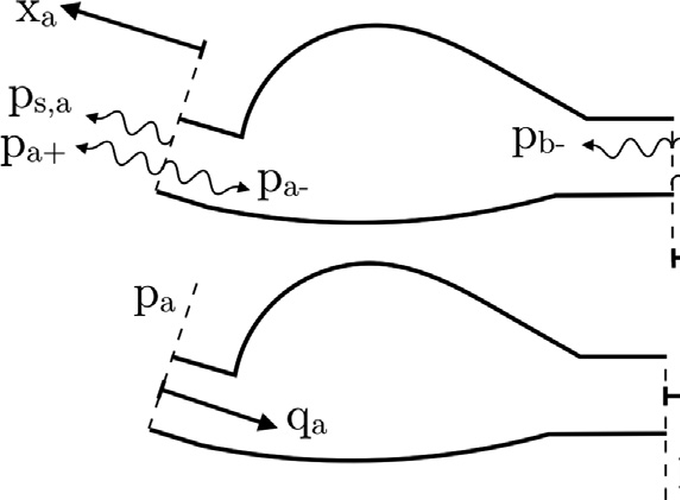The simplest characterization of a source in a duct is to measure the radiated sound power. This method has been widely used and is described in an ISO standard. However, the radiated power depends not only on the source, but also on the rest of the system (duct dimensions, flow disturbances, boundary conditions…). Therefore a more complete characterization of the source is necessary to be able to predict the acoustic behaviour of the source in an arbitrary system. The two-port formulation allows to model any passive element of a duct system by a 2x2 scattering-matrix, and any active element by a scattering matrix and a source vector.
In this project I developped, built, and validated a test rig to measure the active two-port scattering matrix and source vector of high speed small fans used in Dyson consumer products.
More info is available in:
Garnell, E., Åbom, M., Banwell, G., 2019. The use of the two-port method to characterize high-speed small fans. Applied Acoustics 146, 155–163.
